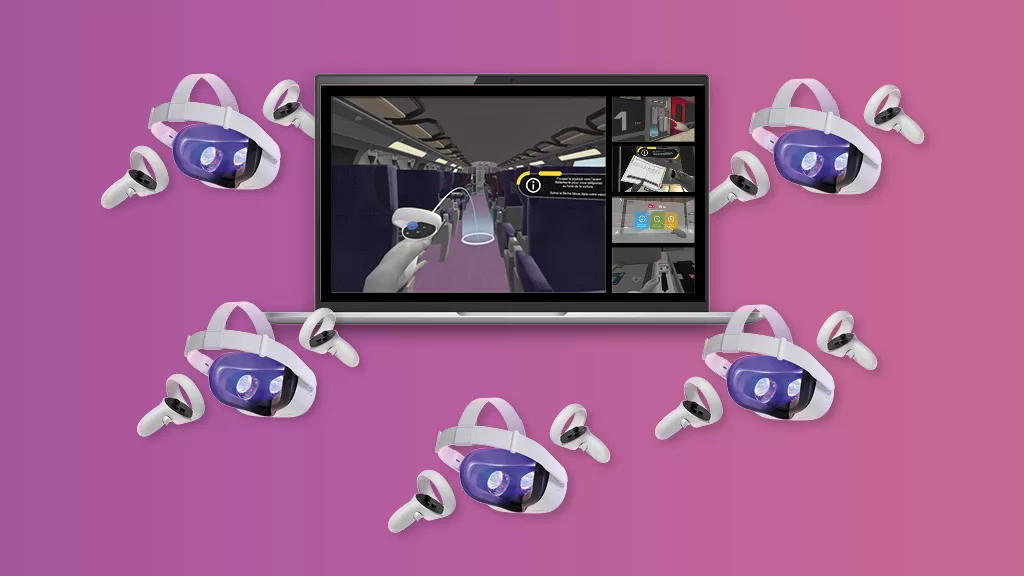The Audace innovation represents an important milestone in the field of collaborative technology and digital interaction. It allows you to receive in real time on a control tablet the images appearing in a fleet of autonomous VR headsets but also to send inputs to one or other of the headsets. Concretely, this allows a trainer to follow several learners at the same time and interact with one or more learners as they wish.
By exploring and going beyond the capabilities of services such as UnityRenderStreaming and WebRTC, Audace has developed an innovation that offers a remarkable and unique user experience.
Exploration of existing technologies
Although UnityRenderStreaming is a promising technology for streaming views between Unity applications or to local servers, it is still in the experimental phase and has limitations, particularly regarding Peer to Peer connectivity and stability. At the same time, WebRTC has demonstrated the ability to establish strong connections and transmit smooth video streams between Unity applications and local servers.
Development of a “home made” solution
Faced with these challenges, the Audace team took the initiative to develop its own solution using the Unity Mirror extension. This innovative solution creates a local network with a server-user connection, allowing real-time observation and interaction from a computer or tablet with each VR headset user.
Intuitive user interface and optimized performance
The user interface, customizable and intuitive, updates every 2 to 5 seconds for complete, real-time visualization. This method optimizes server performance and reduces the size of transmitted data, essential for system fluidity.
Conclusion: a promising future
Audace innovation is much more than just a technological advance; it represents an evolution in the way we interact in digital spaces. With its ability to adapt to specific user needs, it promises to redefine digital collaboration and interaction.

